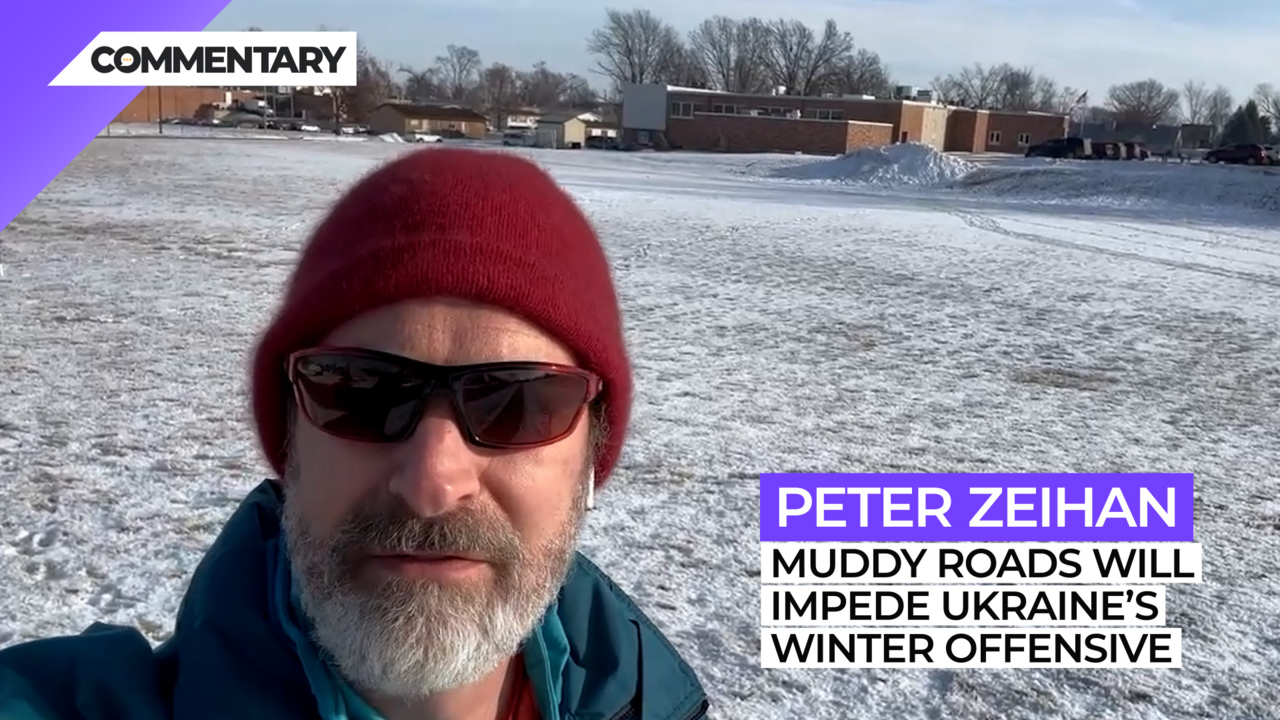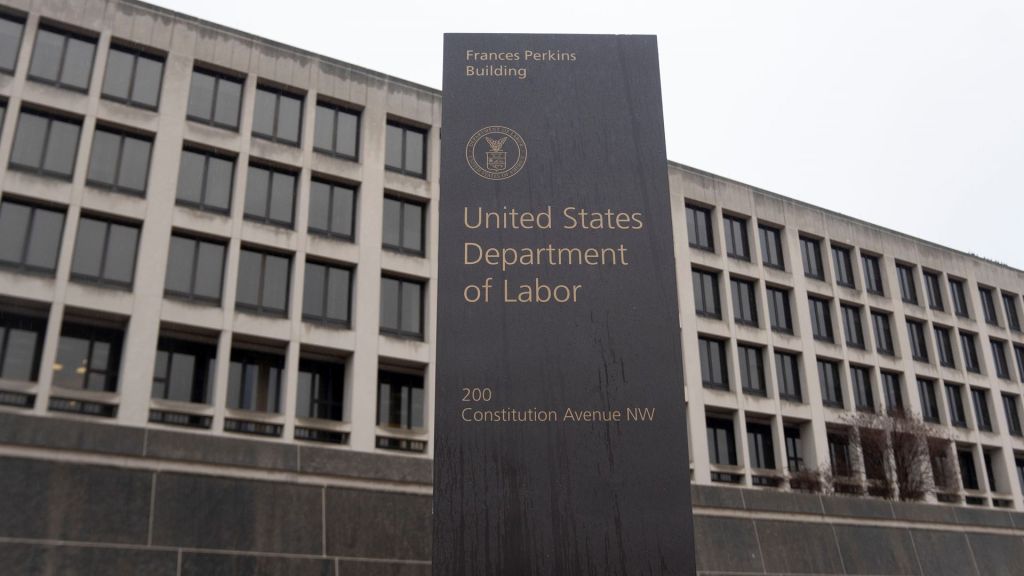
Commentary
-
Our commentary partners will help you reach your own conclusions on complex topics.
Hey everyone, Peter Zeihan here coming to you from my hometown of Marshalltown, Iowa, where I’m visiting the rents for few days. Today we are going to be talking about winter. It has been a really weird winter, specifically in Europe over the course of the next last few weeks in the second, and first weeks of January. Temperatures have been and are expected to continue to be in the 50s in Paris and the 40s in Berlin and Warsaw, and in the high 30s in places in Ukraine, most notably Kyiv. Now, this is throwing a lot of my forecasts into a bit of a tailspin, but you know, weather does what weather does, temperatures are based on where you are — somewhere between 20 and 40 degrees above normal and have been relatively consistently for almost a month at this point.
In the case of Western Europe and Central Europe, this means that energy demand has plummeted. Because normally these guys would be approaching zero degrees Fahrenheit and and those sorts of environments, they simply need to use a lot of energy in order to keep the lights on and especially the heat going. But there have been times that Berlin is broken 50 in December. And in that sort of environment, keeping everybody warm is really easy. And that means that energy demand has plummeted. And the need to cope with the cut offs that have come from the Russian space, because of the Ukraine war, simply are very manageable. And in that sort of environment, you have to play it forward, because it’s not just about electricity and heating. In the European Space, they use a lot of natural gas for a lot of industrial needs. And when the war began, and the Europeans began weaning themselves off of Russian energy, they discovered they had to shut down a whole lot of industry in order to keep people alive. Well, now with the weather warmer and energy freed up for other uses, we’re seeing everything from industry to specifically fertilizer production, nitrogen fertilizer production coming back at scale, this is something that is wildly unexpected. This is the warmest winter on record by a very large margin, we shouldn’t expect it to last we shouldn’t expect it to be repeated. But at least for this moment, Europe is having a great time of it. And considering the obstacles in front of them. And the situation with energy supply in general, you know, enjoy it while it lasts. The problem, of course, is its weather it could change tomorrow, probably will change within a couple of weeks. And then we’re going to be back in the same place. The issue is that energy demand is tends to be inelastic. And so if you only remove five to 10% of energy inputs, and with the Europeans, I’m sorry, with the Russian stuff going offline, we’re talking 40%, you can easily see a doubling, tripling quadrupling, six toppling of energy prices, like we saw consistently last year. But it also means that it goes the other direction as well. So you reduced demand by 10%. And prices absolutely plummeted. And that’s where we are today won’t last. This is not the new normal, all the forecasts are still in place. But if we can hold warm weather throughout, say January, then you can see the end of the winter on the other side. And we might get to a better position for the Europeans and for global food supplies this calendar year and that would be unexpected, but very, very welcome. The other big weather thing is further east and Kyiv, where temperatures are in the 30s. Now normally, you have certain seasons that you can and cannot do things in Ukraine. You have your deep freeze in the winter, which is normally mid November through late February, when temperatures have been so far below freezing for so long that the ground freezes solid, and tanks can move around and fields just fine. But then you’ve got the shoulder seasons in October and early November. And then in March and into April that are kind of mud seasons and in those sorts of environments. You can really only drive on roads. Well my standing forecast for Ukraine is that the Ukrainians were going to try to do a broad spectrum, offensive south in the Aberdeen sub province, aiming roughly for the Sea of Azov. It’s not that they needed to reach the sea itself. They just needed to get close enough that their artillery can target the trucks that are the primary supply line for equipment being shipped from shifted from Russia proper to the southern front and KEARSON. Remember that the Kerch Strait bridge was blown up a couple of months ago, and because of that the Russians can no longer use rail connections from Russia across the Kerch Strait and into the Crimean peninsula. That option is gone so everything has to be supplied by truck. The Russians don’t have a lot of tactical military support trucks left so their only option is to use basically city vans and Scooby Doo vans and city buses in order to ferry artillery shells and you know every time you hit a speed bump everyone’s like and when those things go up, wow, they really go up. But if we are in the 30s in Ukraine for temperatures mud season has a getting a second lease on life here. And in that sort of environment the Ukrainians can only go
operate on the roads. And that makes it much more difficult to do any sort of artillery or especially mobile warfare based assault and zapper NITSA. Because they can’t put things into the fields and into the dirt, they have to stay on the road so they get stuck in the mud. So this has provided a bit of an operational pause, which is really working against the Ukrainians. The Ukrainians don’t have as much equipment and men as a rule than the Russians do. And if they can’t fight a war of movement, then the Russians with their better Air Force, and especially their better missile forces can just keep pounding Ukrainian cities over and over again, doing a lot of economic and humanitarian damage. And there’s not a lot that Ukrainians can do about it in the short term if they can’t operate. So for the Western Europeans and the central Europeans, this has been a godsend for the Ukrainians. They were probably hoping that they were going to be able to have a big offensive right about now. And that’s just not an option if the ground isn’t solid. All right. That’s it for me. Until next time,
-
Peace between Israel and Iran, at least for now
A series of recent airstrikes between Israel and Iran inflamed fears of a wider regional war erupting in the Middle East. That concern now seems to have paid off, after third-party countries around the world successfully intervened and talked down military hardliners in both Israel and Iran in order to avoid such an outcome. Israel’s…
-
Global internet in a precarious state, but that could be a positive
Over 500 underwater cables span over 870,000 miles worldwide, serving as the foundation of the modern global internet. Despite their critical role in facilitating communication, these cables often go unnoticed, even as the amount of data transmitted through them has surged. So what happens if the cables fail? Straight Arrow News contributor Peter Zeihan contends…
-
Water wars are an unlikely future
Foreign policy writers have long warned of the possibility that clean drinking water might become “the next oil” — that is, that major wars might be fought around the globe over access to potable water. With expanding populations and finite water supplies, these critics argue that humans will inevitably fight each other to secure drinking…
-
Are Russia’s hypersonic missiles too good to be true?
Russia has reportedly used five of its new hypersonic Zircon missiles to target Kyiv since the beginning of 2024. Russia claims that these sea-based missiles, boasting a range of 625 miles and capable of traveling at nine times the speed of sound, are part of its family of “superweapons” aimed at penetrating the U.S. missile…
-
Norway sending F-16s to Ukraine
In recent months, the need for Ukrainian air defenses has grown more urgent. As U.S. aid is unable to pass through Congress, Ukraine’s European allies have been stepping up to provide what they can. Norway is now the latest nation to pledge F-16s to Ukraine, not only to defend Ukrainian airspace, but also for the…
Latest Stories
-
 AP Images
AP Images
DOJ to pay $138M to sexual abuse victims of Larry Nassar
-
 AP Images
AP Images
Feds accuse Sheetz of discrimination for using criminal records when hiring
-
 AP Images
AP Images
Noem’s abortion comments ignored by right-leaning media
-
 Getty Images
Getty Images
Pythons decimate Florida’s wildlife, is eating them the answer?
-
 Getty Images
Getty Images
RFK Jr. wants government budget on blockchain for accountability
Popular Opinions
-
In addition to the facts, we believe it’s vital to hear perspectives from all sides of the political spectrum.
Latest Opinions
In addition to the facts, we believe it’s vital to hear perspectives from all sides of the political spectrum. We hope these different voices will help you reach your own conclusions.
The opinions published in this section are solely those of the contributors and do not reflect the views of Straight Arrow News.

















Latest Commentary
We know it is important to hear from a diverse range of observers on the complex topics we face and believe our commentary partners will help you reach your own conclusions.
The commentaries published in this section are solely those of the contributors and do not reflect the views of Straight Arrow News.
Peter Zeihan
Geopolitical StrategistGlobal internet in a precarious state, but that could be a positive
Water wars are an unlikely future
Are Russia’s hypersonic missiles too good to be true?
Dr. Frank Luntz
Pollster and Political Analyst‘Take the job seriously’: Why Americans are fed up with Congress
‘If we can shrink it, it will stop growing’: Americans talk debt, deficit
‘I don’t think they care’: Undecided voters explain their reasons
Pete Ricketts
U.S. Senator for Nebraska